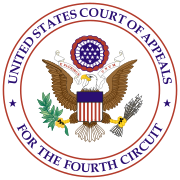Simkins v. Moses H. Cone Memorial Hospital
| Simkins v. Cone | |
|---|---|
 |
|
| Court | United States Court of Appeals for the Fourth Circuit |
| Full case name | Simkins v. Moses H. Cone Memorial Hospital |
| Argued | April 1, 1963 |
| Decided | November 1, 1963 |
| Citation(s) | 2323 F.2d 959 (4th Cir. 1963) |
| Court membership | |
| Judge(s) sitting | SOBELOFF, Chief Judge, and HAYNSWORTH, BOREMAN, BRYAN and J. SPENCER BELL sitting en banc |
Simkins v. Cone, 323 F.2d 959 (1963), was a federal case, reaching the Fourth Circuit Court of Appeals, which held that "separate but equal" racial segregation in publicly funded hospitals was a violation of equal protection under the United States Constitution.
George Simkins, Jr. was a dentist and NAACP leader in Greensboro, North Carolina. One of his patients, an African-American person, developed an abscessed tooth and Simkins felt that the patient required medical treatment, but none of the local hospitals that would accept African-American patients had space for the patient. With the assistance of the NAACP and other medical professionals in the area, Simkins filed suit, arguing that because the Moses H. Cone Memorial Hospital and Wesley Long Hospital had received $2.8 million through the Hill–Burton Act that they were subject to the Constitutional guarantee of equal protection. The suit was filed in February 1962.
At district court, the suit was dismissed, the court finding that there was no involvement of the state or federal government. This ruling was appealed to the Fourth Circuit Court of Appeals in November 1963.
In a 3-2 decision, the Fourth Circuit overturned the district ruling, looking to whether the hospitals and the government were so intertwined by funding and law that the hospitals' "activities are also the activities of those governments and performed under their aegis without the private body necessarily becoming either their instrumentality or their agent in a strict sense." The Court held that to be the case.
The Court then found the provision for segregated "separate but equal" facilities to be unconstitutional, and it struck down that portion of the Hill–Burton Act.
...
Wikipedia
